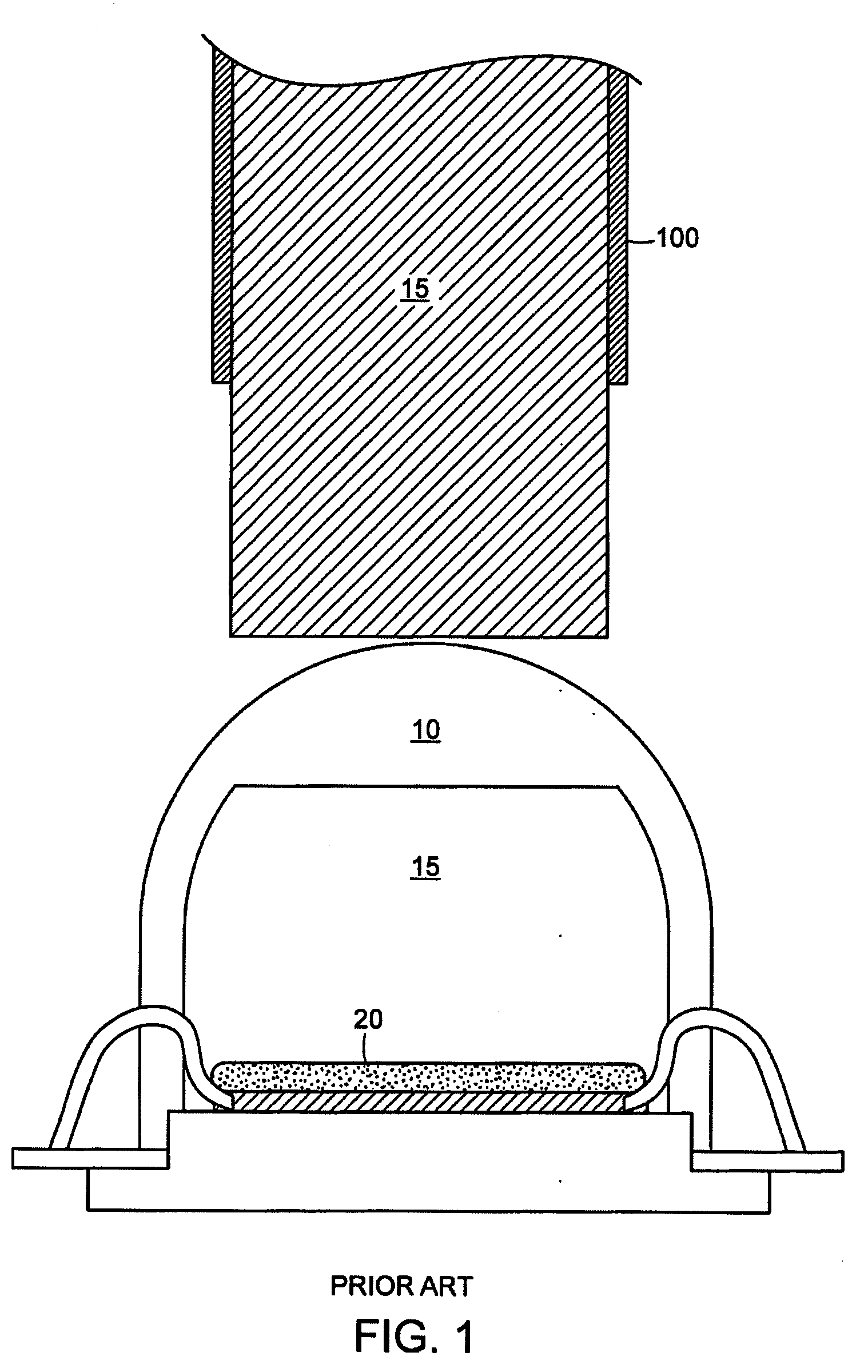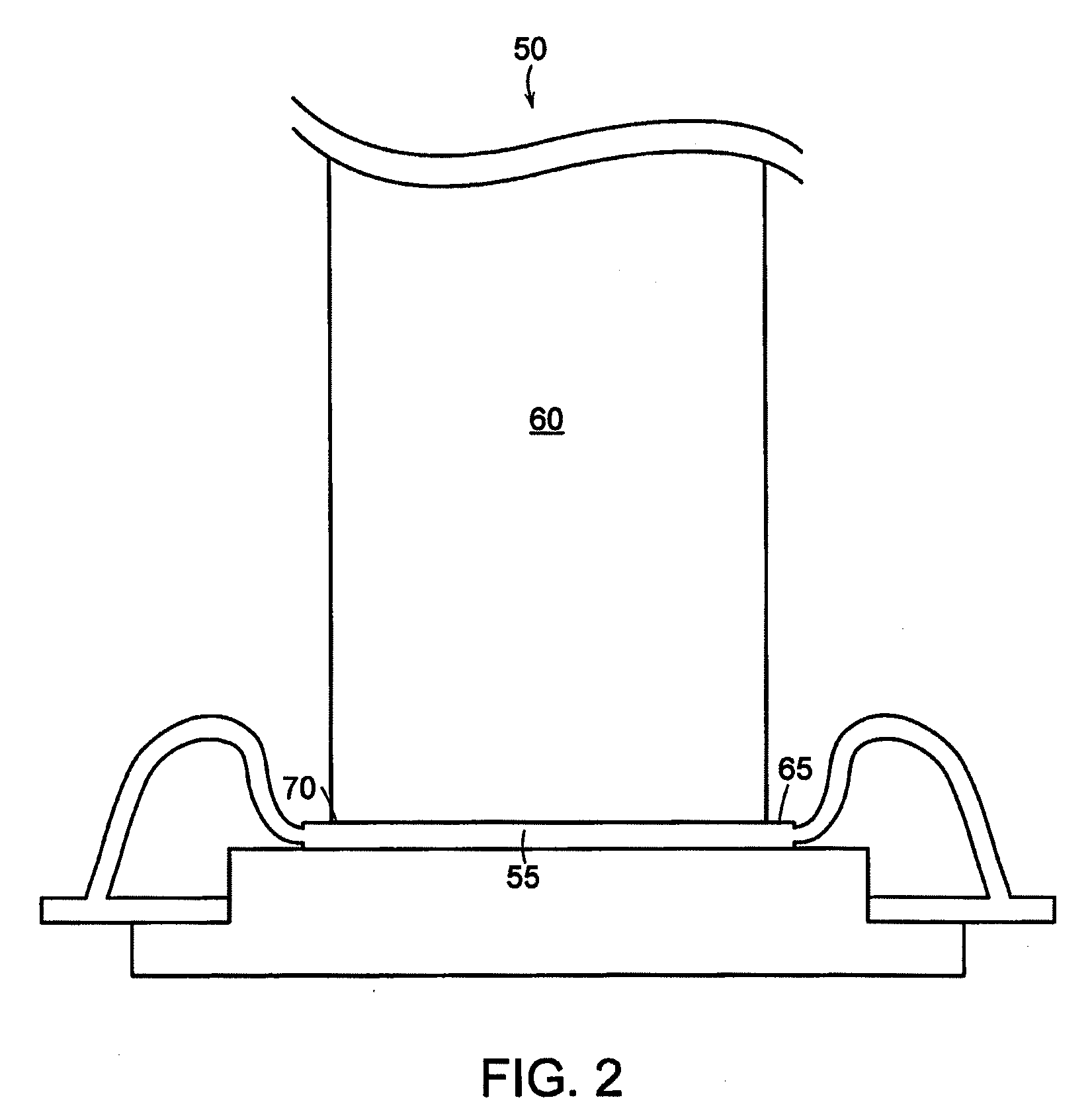Illumination device
a technology of illumination device and led light, which is applied in the direction of instruments, waveguides, lighting and heating apparatus, etc., can solve the problems of reducing the ability of low power leds to properly illuminate objects, coupling remains, etc., and achieves the effects of high coupling efficiency, high light output, and simplified mechanical design and size of illumination devi
- Summary
- Abstract
- Description
- Claims
- Application Information
AI Technical Summary
Benefits of technology
Problems solved by technology
Method used
Image
Examples
Embodiment Construction
[0020]Prior art illumination devices, such as, for example, the illumination device shown in FIG. 1, include a light source 5 having a dome-shaped lens 10 optically coupled to transmission media 15. With this coupling arrangement, light is ineffectively transmitted to the transmission media 15 because the light emitting portion 20 of the light source 5 is not sufficiently close to the transmission media 15 (i.e., due to the curvature of the dome lens 10, the light emitting portion 20 is spaced at an unacceptable distance away from the transmission media). In addition, the dome shape lens 10 provides a convex light-emitting surface. As a result, a portion of the light passing through an interface between the light source 5 and the transmission media 15 is lost, thereby decreasing the light strength and efficiency of conventional illumination devices.
[0021]Illumination devices of the present invention include a substantially planar light-emitting surface which is proximate to either a...
PUM
 Login to View More
Login to View More Abstract
Description
Claims
Application Information
 Login to View More
Login to View More - R&D
- Intellectual Property
- Life Sciences
- Materials
- Tech Scout
- Unparalleled Data Quality
- Higher Quality Content
- 60% Fewer Hallucinations
Browse by: Latest US Patents, China's latest patents, Technical Efficacy Thesaurus, Application Domain, Technology Topic, Popular Technical Reports.
© 2025 PatSnap. All rights reserved.Legal|Privacy policy|Modern Slavery Act Transparency Statement|Sitemap|About US| Contact US: help@patsnap.com



